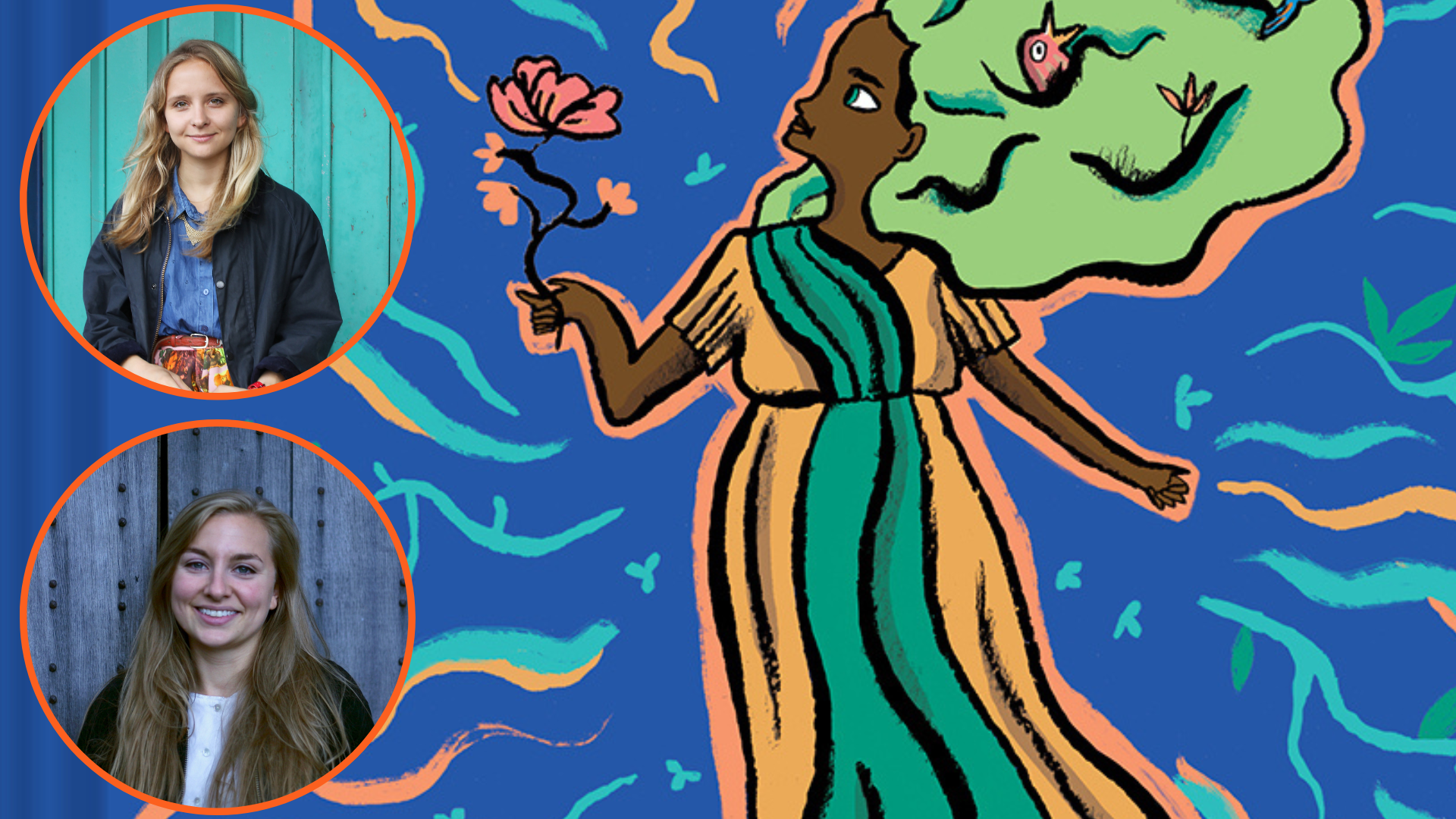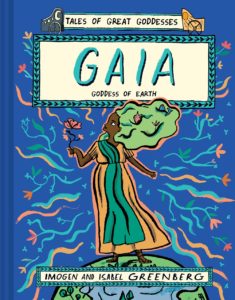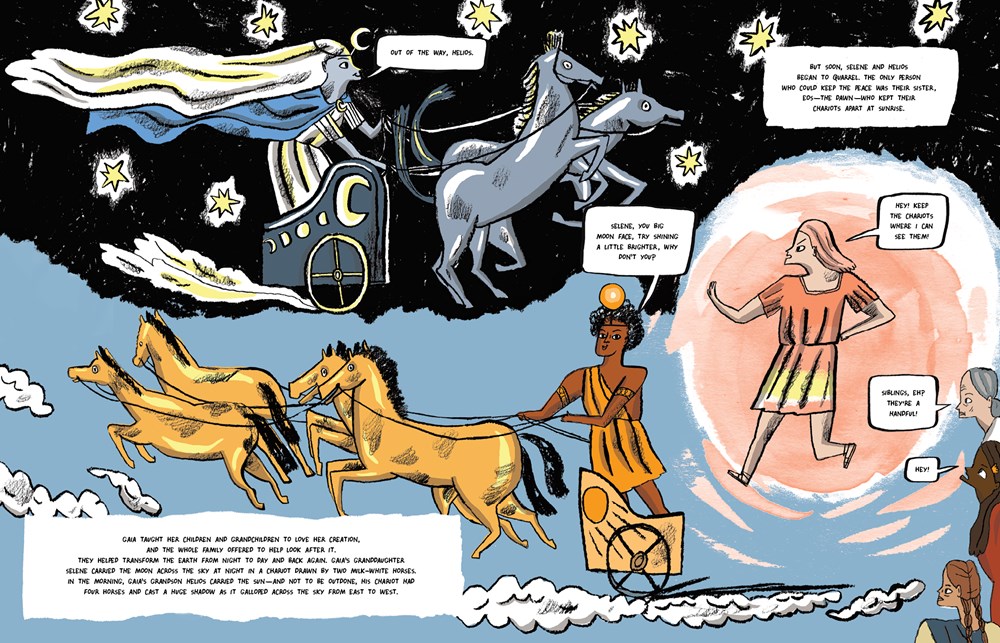
Isabel Greenberg is an award-winning illustrator, comic artist, and writer. Her graphic novels have received starred reviews, won the Best Book Award at the British Comic Awards, and won the Observer/Cape/Comica Graphic Short Story Prize, among other praise. She lives in London and enjoys illustrating all things historical. Imogen Greenberg loves writing history books and myths for children. When not writing, she works in arts and theater administration. She lives in London.
We talked with Isabel and Imogen about their new graphic novel for young readers Gaia: Goddess of Earth, the process of collaborating on a book, and the environmental message to be found in Gaia's story .
 Gaia: Goddess of Earth is a feminist and vibrantly illustrated take on the Greek myth of Gaia, the goddess who created the world. What sparked the idea for this book?
Gaia: Goddess of Earth is a feminist and vibrantly illustrated take on the Greek myth of Gaia, the goddess who created the world. What sparked the idea for this book?
Isabel: We’d already worked on Athena and we wanted to follow up with a story about another exciting classical Goddess. Gaia was our choice for a number of reasons, but what was most exciting for me was how little I knew about her! I had a pretty clear idea of how Athena’s story would be told before we even started on it, but Gaia was much more of an unknown, so I learnt as we worked. I’ll let Imogen tell you how we first came upon the idea originally.
Imogen: The idea for it actually came at an event we did for Athena. A little girl called Gaia came up to us afterwards with her mother, and said ‘have you thought about doing your next book about Gaia?’ I didn’t know much about her, but I started researching on the train home. With Athena, it was a coming-of-age story, as she grows up and learns about the world she’s been born into. With Gaia, she creates that world and then it spirals out of her control for lots of reasons. As Isabel says, we thought we knew the Greek myths really well from studying Athena, but it opened up whole other parts of the myths we’d never encountered before.
What was your process for creating Gaia? How did you collaborate on bringing this story to life?
Isabel: Our process was quite collaborative. We discussed the kind of story we wanted to tell, Imogen worked on the script and text and then sent it to me to work on the pencils. We came back together to see if we wanted to change any of the text once the images were in place. Sometimes dialogue might be added or cut. And sometimes a character looked like they needed to say something different! It was a much more fluid and close creative process than often happens when illustrating someone’s text.
Did you encounter anything unexpected while working on the book?
Imogen: So much of the story was new and unfamiliar to us. And that was quite freeing. We pushed a bit further in trying to draw parallels for modern readers, to really engage with why these stories still matter to us today. The Greek myths are really fun, but they’re also so malleable. They’re stories within stories that slot together and you can look at them from so many different angles. With Gaia, we carried on some of the feminist themes from Athena, but became interested in the environmental message too. Gaia’s name has become synonymous with ideas about the natural world and it was interesting to see how that theme emerged from the stories we were playing with.
Do you have a favorite moment or image in the book?
Isabel: One of my favorite images is of Helios and Selene. I loved the visual of the chariots tearing across the sky, bringing the sun and moon. That was great fun to draw.
Imogen: There’s always characters that you immediately love and wish you could include more, and in Gaia, it was definitely Helios and Selene! I loved how Isabel brought their story to life.

What do you hope readers will take away from Gaia’s story?
Imogen: I hope readers who’ve never read the myths before will get excited and keep engaging with classics in other forms. I love that there are so many interpretations and versions of these stories. We’ve had kids at events before who are surprised because the Athena from our book is so different from the Athena in Percy Jackson. I think that’s a really great thing, because kids begin to use these stories as a springboard for their own imaginations. What would their own Athena be like, if they were writing it? Then history and classics become a really creative world, rather than something very old and unmoving.
Isabel: I love meeting young readers at events, particularly when they involve drawing activities. I always hope that Kids who like drawing find themselves inspired to make their own comics and illustrations.
What are you currently reading? Are there any upcoming books that you are excited about?
Imogen: This is really for adults, but I was excited to hear Madeline Miller is taking on Persephone in her next novel. That should be a really good read!

